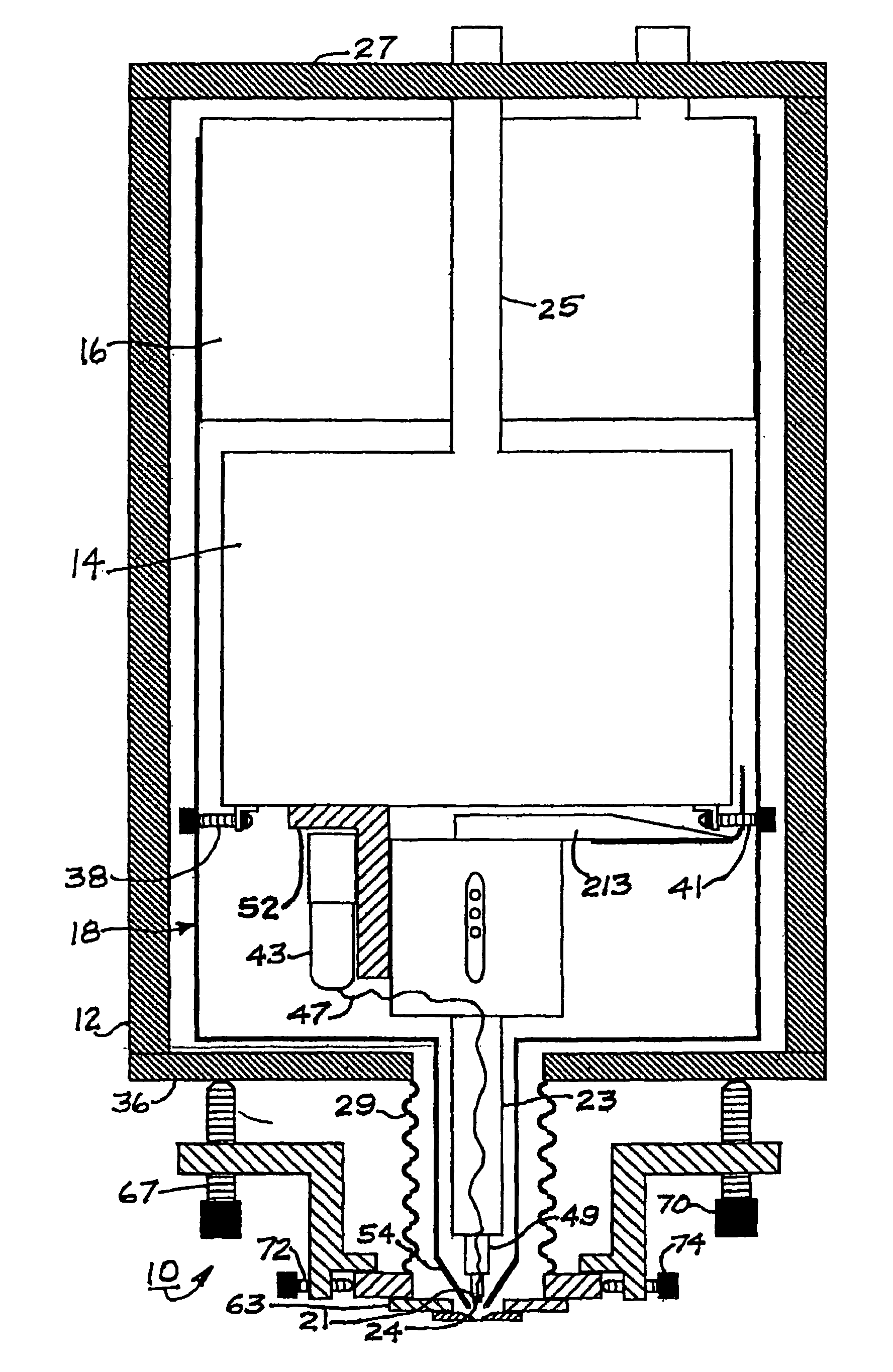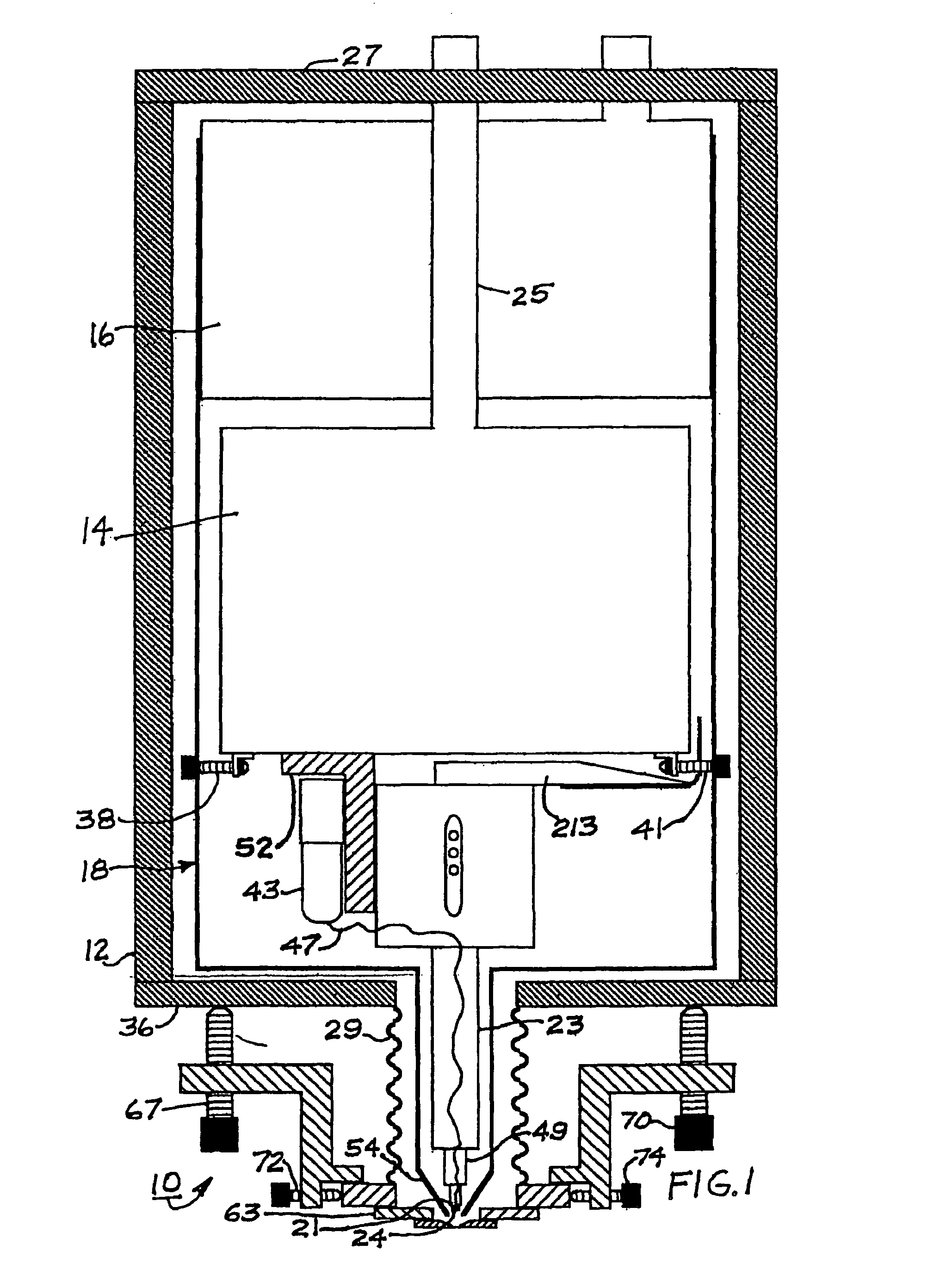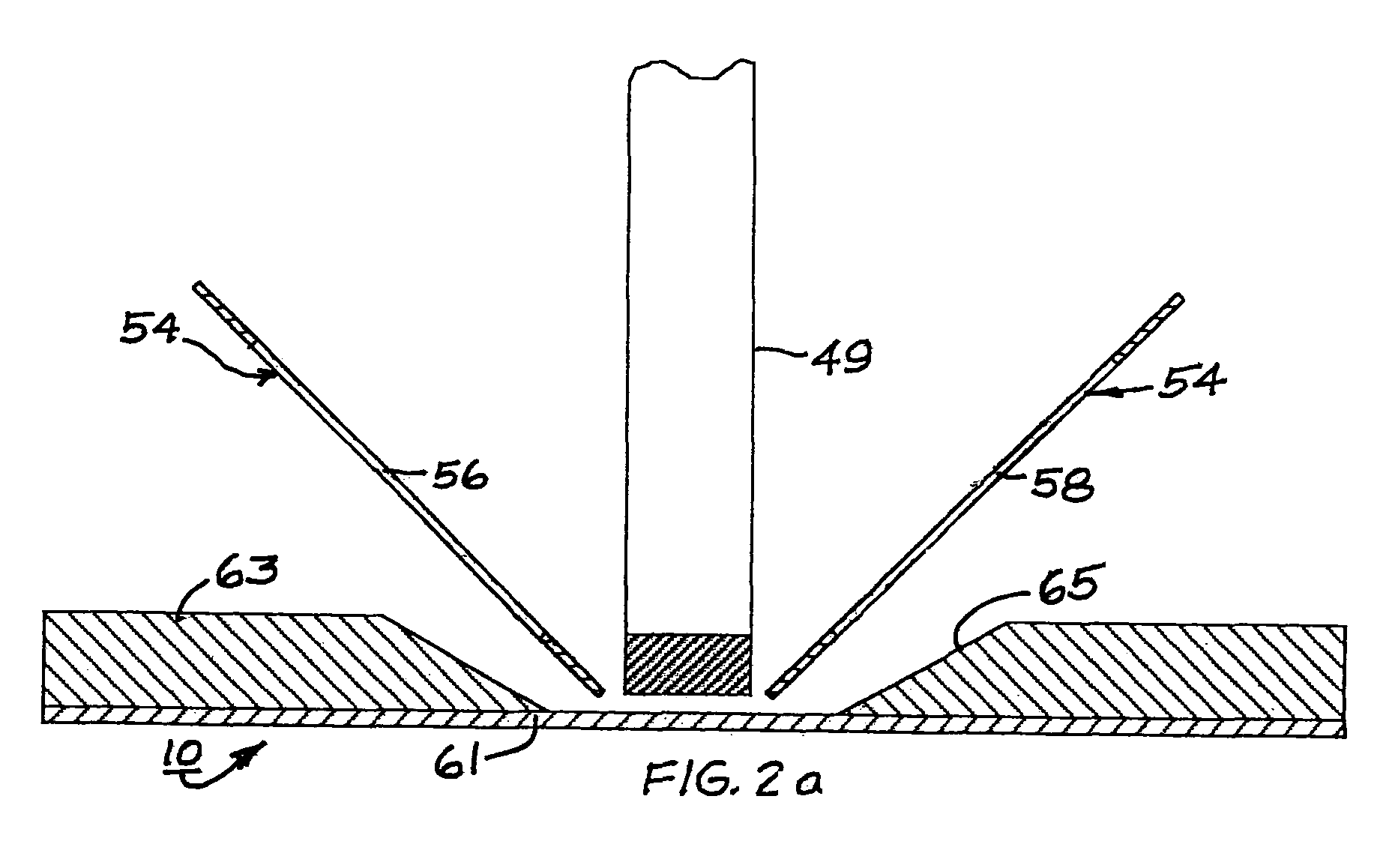Superconducting quantum interference apparatus and method for high resolution imaging of samples
a quantum interference and superconducting technology, applied in the direction of superconducting devices, magnetic field measurement, instruments, etc., can solve the problems of limited scanning squid microscopes, patents that do not disclose the manner in which the sensor is used, and the adjustment apparatus does not lend itself to extremely close tolerance spacing
- Summary
- Abstract
- Description
- Claims
- Application Information
AI Technical Summary
Problems solved by technology
Method used
Image
Examples
first embodiment
[0160]The first embodiment is the use of a small diameter (1 mm) magnetometer or gradiometer to allow imaging of object features <100 μm in size. An advantage of an axial gradiometer (e.g., FIGS. 15 and 17) is its ability to preferentially reject signals from distant noise sources. A relative disadvantage of multi-turn coils wound on a fixed diameter mandrel is that the coils are sequentially layered above the bottom coils or wound as a solenoid. In either case, the structure becomes three dimensional (non-flat) with the upper turns be located further from the object being detected.
second embodiment
[0161]the detection coil is the use of a fractional turn SQUID (FIG. 32), [“Sensitivity enhancement of superconducting quantum interference devices through the use of fractional-turn loops”, J. E. Zimmerman, J. Appl Phys, vol 42, pp 4483–4487 (1971)] in place of the combined SQUID sensor and separate detection coils or integrated SQUID sensor / magnetometer. Rather than having a single superconducting SQUID loop (FIG. 33), a fractional turn SQUID connects N loops in parallel (FIG. 34) reducing the total inductance of the SQUID while keeping the effective area constant. This gives rise to higher sensitivity for a fixed diameter. Additionally, its planar fabrication places the sensing element closer to the object being detected that a three dimensionally multi-turn or solenoidally wound magnetometer or gradiometer. Axial (e.g., dBz / dz) or planar (e.g., dBz / dx) gradiometers can be synthesized by appropriately positioning two or more fractional turn SQUIDs and electronically subtracting t...
third embodiment
[0162]the detection coil is the use of an apodized or spiral detection coils [U.S. Pat. No. 5,038,104 “Magnetometer flux pick-up coil with non-uniform interturn spacing optimized for spatial resolution”, John Wikswo, Jr., and Bradley J. Roth (1991)] (FIG. 20). The advantage of an apodized coils is greater spatial resolution than a multi-turn coil of the same outer diameter that has been wound on a fixed diameter mandrel (necessitating that the additional turns be wound sequentially above the lowest coil).
[0163]Like the fractional turn SQUID, planar fabrication places the sensing element closer to the abject being detected that a three dimensionally multi-turn or solenoidally wound magnetometer or gradiometer. Apodized coils lend themselves to the creation of intrinsic axial gradiometers while retaining their minimum vertical thickness.
PUM
 Login to View More
Login to View More Abstract
Description
Claims
Application Information
 Login to View More
Login to View More - R&D
- Intellectual Property
- Life Sciences
- Materials
- Tech Scout
- Unparalleled Data Quality
- Higher Quality Content
- 60% Fewer Hallucinations
Browse by: Latest US Patents, China's latest patents, Technical Efficacy Thesaurus, Application Domain, Technology Topic, Popular Technical Reports.
© 2025 PatSnap. All rights reserved.Legal|Privacy policy|Modern Slavery Act Transparency Statement|Sitemap|About US| Contact US: help@patsnap.com



